Feeling lost when it comes to figuring out your customers? In today’s cutthroat market, understanding what makes them tick is crucial for success. A study found that companies that effectively leverage customer insights outperform competitors by 85% in sales growth. That’s why market research is like a flashlight that helps you see clearly in the darkness of customer behavior and preferences.
In the past, market research relied on surveys, focus groups, and interviews. While these methods were helpful, they had drawbacks. They couldn’t reach as many people, and it took time to gather information, making it hard to capture what customers, especially younger demographics, were thinking right now. A study by Pew Research Center shows that 77% of adults in the US now use social media, highlighting the shift in how people interact and share information.
But things are changing thanks to amazing new technology! Artificial Intelligence (AI), big data, and social media analysis are completely revamping market research. These tools aren’t just collecting more data, they’re also making the information more accurate and detailed than ever before.
This article will explore how these advancements are transforming market research. We’ll see how AI, big data, and social media analysis are helping businesses gather deeper customer insights and make smarter decisions based on real data, putting them on the fast track to success.
The Power of AI in Market Research

Feeling like you’re flying blind when it comes to understanding your customers? In today’s data-driven market, customer insights are the holy grail for businesses. That’s where Artificial Intelligence (AI) swoops in as a game-changer for market research. AI equips businesses with powerful tools to analyze massive datasets, uncovering hidden patterns in customer behavior that would be easy to miss with traditional methods. A study by the Boston Consulting Group found that companies that leverage AI in customer insights outperform competitors by 35% in sales growth. This translates to a deeper understanding of your customers, across all demographics, and even the ability to predict their future needs!
Unveiling Hidden Patterns: Machine Learning & Predictive Analytics
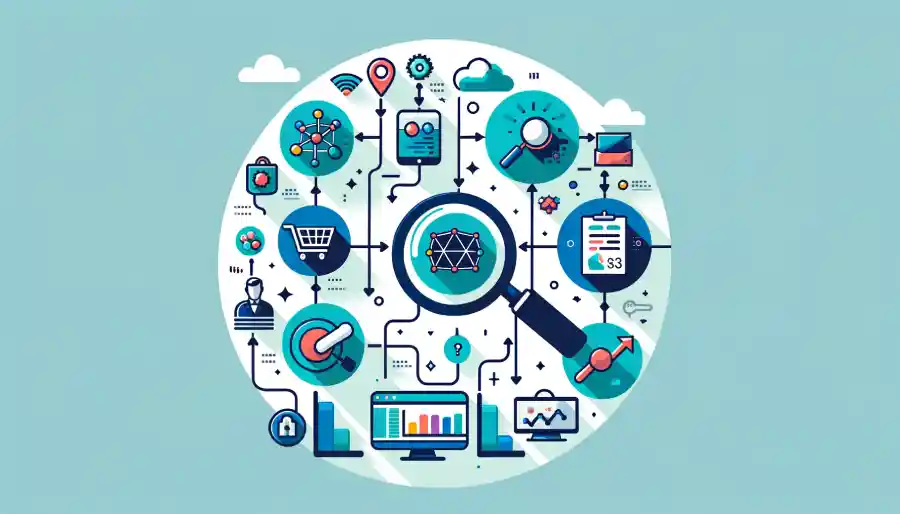
The secret behind AI’s market research magic lies in two key components: machine learning and predictive analytics. Imagine machine learning as a super-powered detective that can sift through mountains of information, uncovering hidden connections and patterns that wouldn’t be obvious to regular folks. By learning from past data (purchase history, website behavior, etc.), AI algorithms can identify trends that show what customers like, what they do, and even what they might do next.
Predictive analytics takes things a step further. It uses those hidden clues to basically predict the future of your customer base. This means businesses can anticipate what customers will need, want, or face problems with before it actually happens. In today’s fast-paced world, with younger demographics especially comfortable with online interactions, that kind of foresight is a goldmine! It lets companies stay ahead of the curve and keep their competition in the dust.
For example, imagine being able to predict which customers might ditch your service before they actually do. With AI, you can analyze things like call history, texts, and data usage to see who might switch to another provider. This lets you jump in and offer them special deals or personalized plans to keep them happy. A phone company could use this approach to prevent customer churn (that’s when customers leave) and boost customer satisfaction.
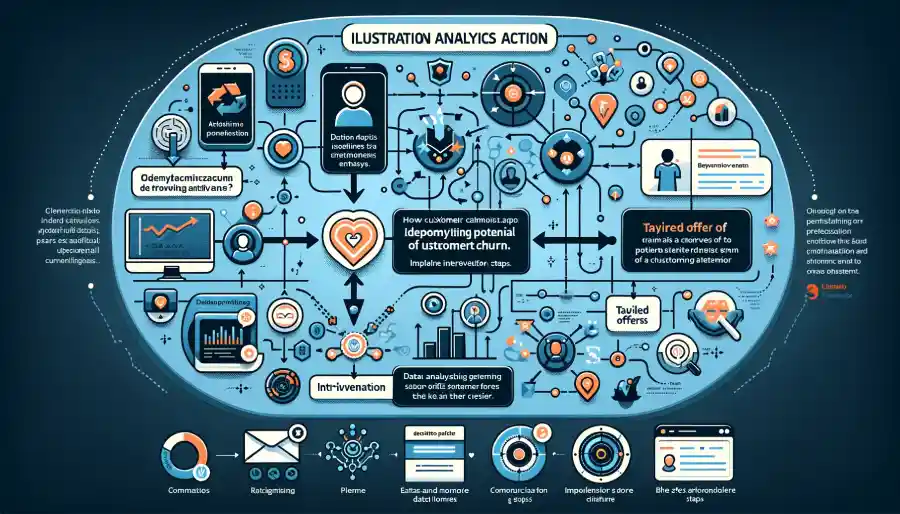
AI isn’t just about fancy tricks; it’s about getting to know your customers on a whole new level. By uncovering hidden patterns in vast datasets, businesses can make smarter decisions and create marketing strategies that are more personal and effective. It’s like having a secret weapon in your customer understanding arsenal!
Chatbots & Virtual Assistants: Conversational Research Revolution for Deeper Customer Insights
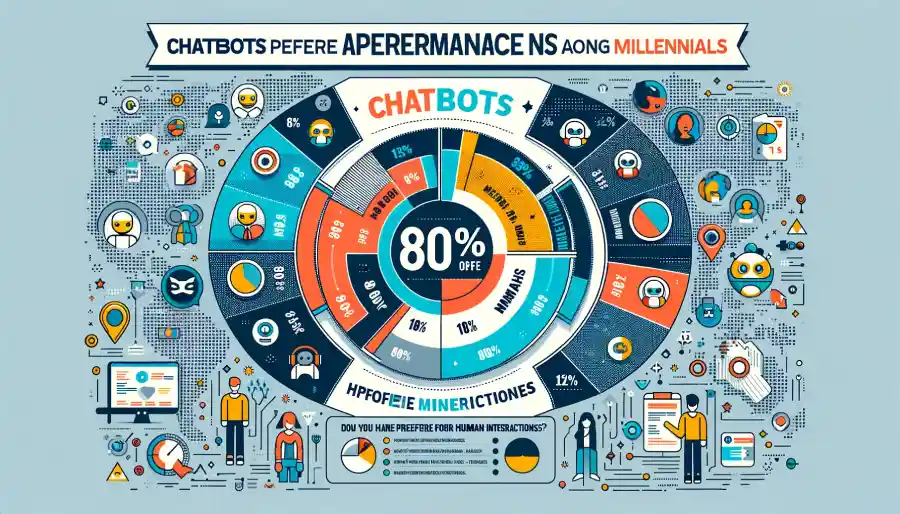
Market research is getting a chatty makeover! AI-powered chatbots and virtual assistants are at the forefront of a conversational revolution, transforming the way businesses gather customer insights. These intelligent systems can engage with customers in real-time, conducting interactive dialogues that feel natural and engaging. This approach isn’t just innovative, it’s highly effective in gathering immediate, authentic customer feedback across all demographics.
24/7 Insights & Global Reach: A Win-Win for Businesses
One of the standout benefits of using chatbots and virtual assistants in market research is their always-on nature. A study by Deloitte found that 80% of millennials prefer using chatbots to interact with businesses, highlighting the growing comfort level with conversational interfaces, especially among younger demographics. Unlike traditional research methods that are limited by time zones and manpower, these AI tools can collect data 24/7, ensuring no valuable insight is missed. This constant availability significantly enhances the volume and variety of data collected, providing a richer, more comprehensive understanding of customer sentiments and experiences.
Moreover, AI-powered conversational agents can easily reach geographically dispersed audiences. This capability is particularly beneficial for businesses operating on a global scale, as it allows them to gather diverse customer insights without the logistical challenges and costs associated with traditional methods. By engaging with a wide range of customers across different regions, companies can gain a more nuanced understanding of global market trends and regional preferences.
For instance, a travel company targeting a younger demographic could leverage a chatbot to collect real-time feedback throughout a customer’s trip. This chatbot could ask travelers about their preferences, experiences, and any frustrations they encounter. The data collected can then inform the company about popular destinations, emerging travel trends, and common customer pain points. This information is invaluable for tailoring future destination packages and improving the overall customer experience.
The Power of Real-Time Feedback: Making Informed Decisions Faster
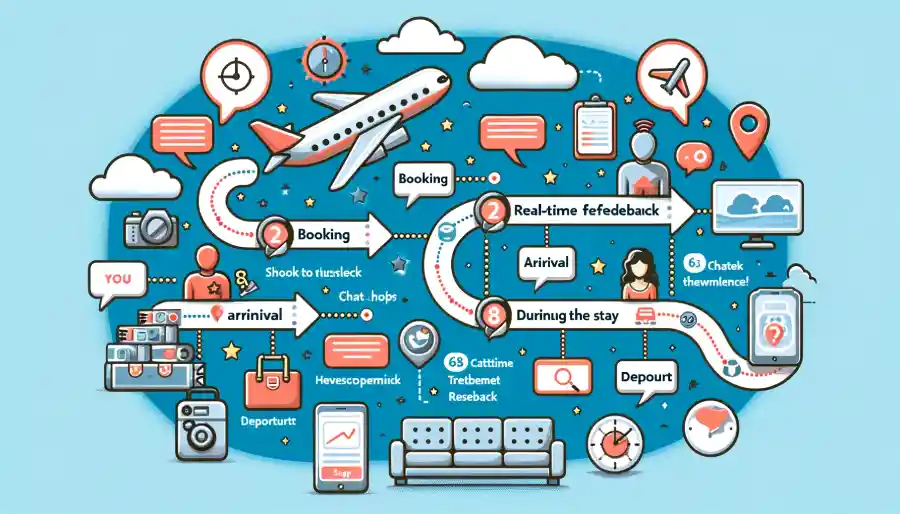
In essence, AI-powered chatbots and virtual assistants are transforming market research by making it more interactive, efficient, and far-reaching. By leveraging these technologies, businesses can engage with their customers in meaningful conversations, gather real-time feedback, and ultimately make more informed decisions that enhance customer satisfaction and drive success.
Big Data: Unveiling a Customer Treasure Trove

In today’s digital era, a goldmine of customer insights lies hidden within the vast amount of data we generate online. This data, known as customer data exhaust, encompasses everything from our online searches and social media posts to our browsing behavior and purchase history. According to a study by IBM, 90% of the world’s data was created in the past two years alone. This firehose of information offers unprecedented opportunities for businesses to understand their customers on a deeper level.
Big data analytics emerges as a powerful tool to sift through this data exhaust, transforming it into actionable insights. By analyzing these digital footprints, businesses can uncover a wealth of information about their customers’ preferences, frustrations, and buying habits. This extends far beyond traditional surveys, providing a richer and more nuanced understanding of the customer journey.
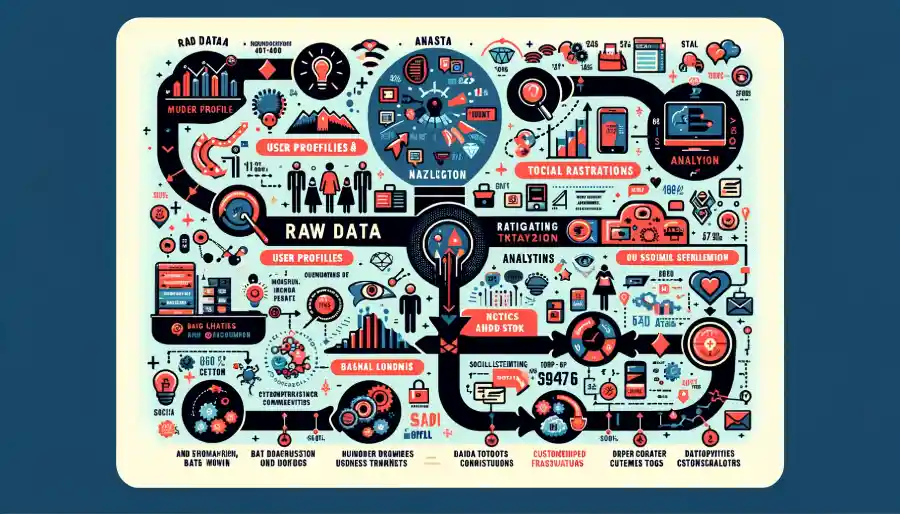
For instance, a retail brand might leverage social listening tools to uncover customer sentiment towards a new product line. By analyzing online reviews and social media discussions, they can pinpoint specific features causing dissatisfaction. A study by McKinsey revealed that companies that excel at social listening are more likely to outperform their peers in sales growth. This valuable feedback allows businesses to address these issues promptly, ultimately enhancing customer satisfaction and loyalty.
Real-Time Insights Fuel Agile Decision-Making
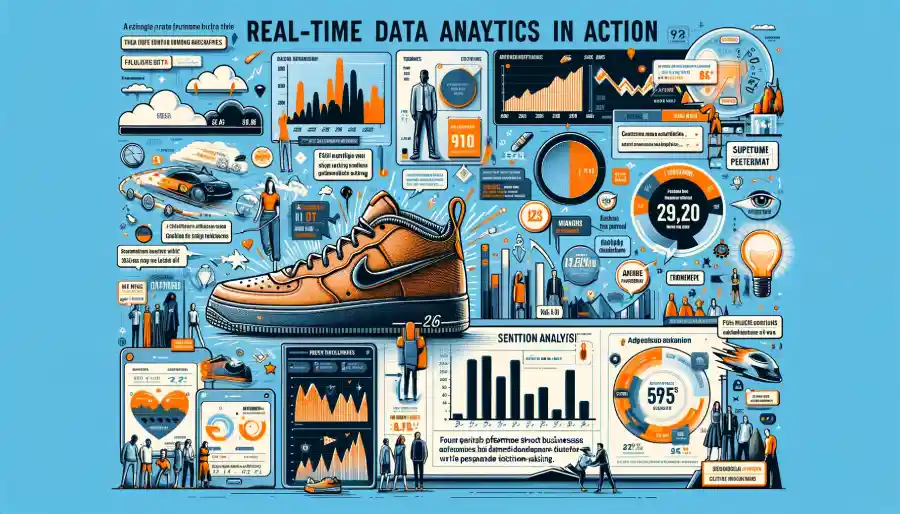
A significant advantage of big data lies in its ability to deliver real-time insights into customer behavior. This immediacy empowers businesses to operate with greater agility, enabling them to make data-driven decisions swiftly to capitalize on emerging trends or mitigate potential risks. Sentiment analysis, a core component of big data analytics, allows companies to gauge customer satisfaction and emotional responses to their products or services. By analyzing the tone and content of customer feedback across various platforms, businesses can identify areas for improvement and adjust their strategies accordingly.
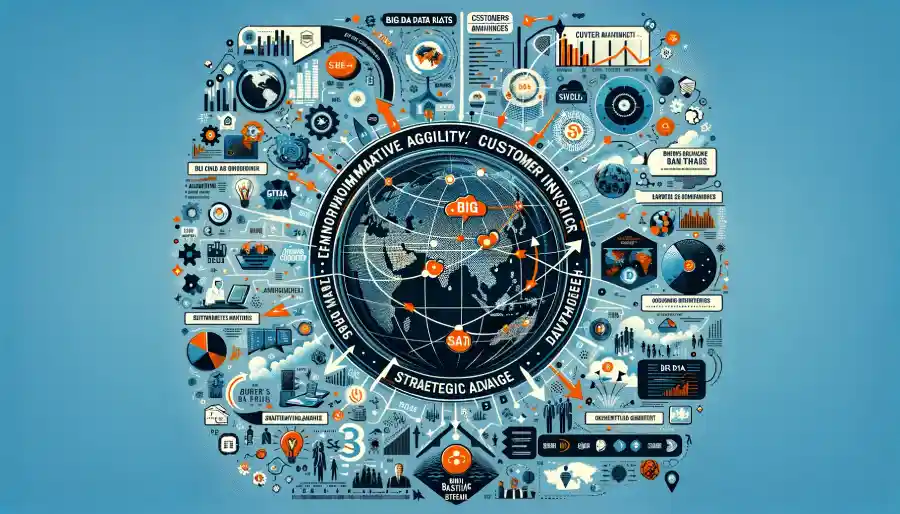
Imagine a clothing retailer that monitors social media conversations and detects a sudden surge in interest for a particular style of sneaker. By capitalizing on this real-time data, the retailer can rapidly adjust their inventory allocation and marketing campaigns to meet this surge in demand. A study by Aberdeen Group found that companies that leverage data-driven insights for marketing campaigns outperform those that don’t by an average of 85%. This swift action could position them ahead of competitors and capture a significant market share.
Big data goes beyond unlocking a treasure trove of customer insights; it empowers businesses to respond with unprecedented speed and precision. In today’s dynamic market landscape, the ability to make agile decisions based on real-time data is a true game-changer, propelling business growth and fostering stronger customer relationships.
Social Media Buzz: Unveiling Customer Secrets & Building Stronger Bonds (Younger Audience Insights Included)

Social media isn’t just for cat videos anymore! In today’s digital age, it’s a goldmine of customer insights, especially for younger demographics who are particularly active online. This new approach to market research is called social listening, and it’s like having a secret agent in the online world, gathering intel on what people are saying about your brand and products.
Going Beyond Likes and Shares: Unmasking Customer Opinions
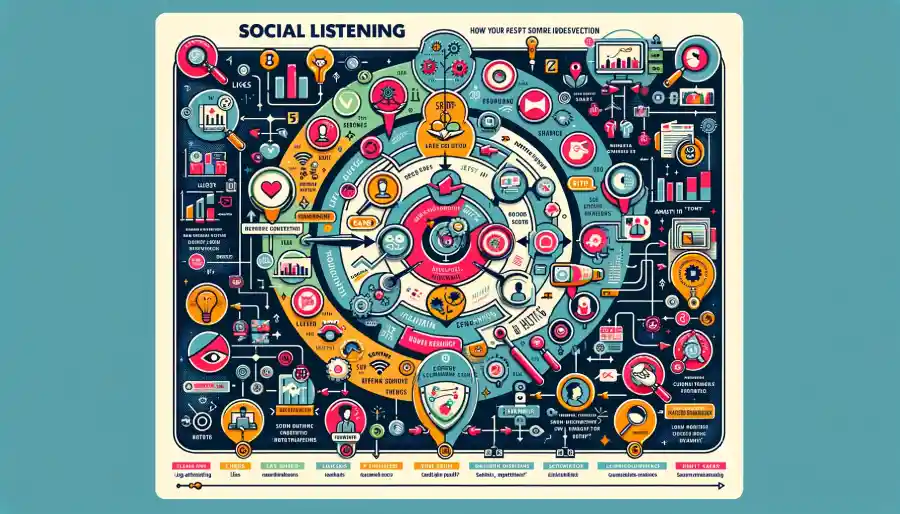
Social listening is more than just counting likes and shares. It’s about understanding the why behind the online chatter. Businesses can use special tools to track brand mentions across various platforms, analyze customer sentiment expressed in reviews and discussions (a trend heavily utilized by younger demographics), and identify emerging topics gaining traction. Imagine having a direct line to your customers’ thoughts, giving you valuable insights to improve your marketing, develop better products tailored to their needs, and provide exceptional customer service.
Turning Online Buzz into Actionable Insights

The benefits of social listening are like having a superpower for your búiness. It allows you to see exactly what people think about your brand in real-time. You can understand customer sentiment across different demographics, with a particular focus on younger audiences who are most vocal online. A study by Pew Research Center shows that 77% of adults in the US now use social media, highlighting the vast pool of customer opinions waiting to be discovered. You can identify what’s popular with your target market and keep an eye on your competitors. Plus, it acts like an early warning system, letting you know about potential problems before they snowball.
For example, a company launches a new makeup line. By using social media analytics, they can track customer reviews. If they see a negative trend where people are unhappy with the application or shade range (a concern especially for younger audiences), they can take action quickly. Maybe they’ll improve the formula for easier blending or expand the shade range to be more inclusive. By listening to their customers and taking action, they can prevent damage to their reputation and show they care about what their audience thinks.
Building a Loyal Fan Base Through Two-Way Communication

Social listening isn’t just about eavesdropping (in a good way!). It’s also about talking back and building relationships with your customers. This two-way communication fosters stronger brand loyalty and helps in building vibrant online communities. By analyzing social media interactions, businesses can gain insights into customer preferences and behaviors, enabling them to tailor their marketing strategies and content more effectively.
For example, a gaming company might analyze social media posts and discussions to understand which game genres and features are most popular among their audience. This insight allows them to create targeted content (like video trailers or developer discussions) that resonates with their followers, encouraging more engagement and participation. As a result, the brand not only strengthens its relationship with existing customers but also attracts new ones, building a strong and engaged online community.
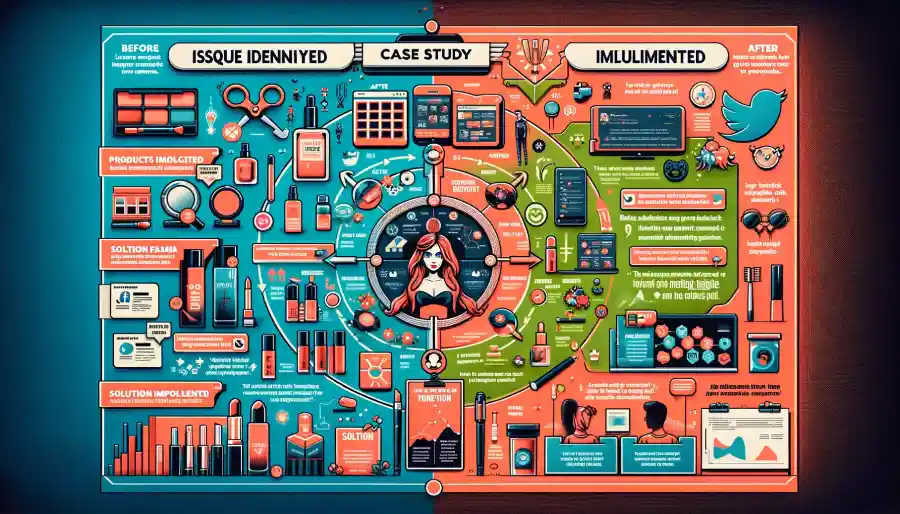
Through social listening and active engagement, businesses can transform social media analytics into a powerful tool for understanding and connecting with their customers. By tapping into the wealth of information available on social media, companies can refine their offerings, tailor their communications, and build lasting relationships with their audience, especially with the younger demographics who are shaping tomorrow’s trends.
Conclusion: Market Research Gets a Boost
In short, artificial intelligence (AI), big data, and social media analysis have completely changed market research. It’s no longer about just reacting to what’s happening, but about predicting what will happen next and planning ahead. These fancy technologies help businesses understand their customers better, guess what will be popular in the future, and make smarter decisions based on real information.
- AI helps businesses see hidden patterns in how people shop, so they can guess what customers might want before they even know it.
- Big data lets companies crunch massive amounts of information to get a complete picture of the market and spot trends they might have missed otherwise.
- Social media analysis lets businesses listen directly to what their customers are saying online, so they can respond quickly and build stronger relationships.
As this technology gets better and better, market research will become even more powerful. We’re headed towards a time where businesses can understand their customers like never before, and create marketing that feels custom-made for each person.
The key takeaway? If you want your business to succeed in the future, you need to jump on board with these new tools. They’ll help you find new ways to grow, make your customers happy, and stay ahead of the competition.
Frequently Asked Questions
Here’s a breakdown of some common questions about how fancy tech is changing market research:
1. So, what does AI do in market research?
Imagine a super-powered research assistant! AI automates analyzing tons of data, finds hidden patterns in how people shop, and even predicts what might be popular next. This helps businesses make faster and smarter decisions based on real information.
2. How does big data play a role?
Think of big data as a giant puzzle with tons of pieces. Traditional research might only look at a few pieces, but big data lets companies see the whole picture. This reveals hidden trends and insights about what customers want and what’s going on in the market.
3. What’s the deal with social media analytics?
Social media is like a giant customer conversation. By listening to what people say online, businesses can understand their feelings about a brand and what’s trending. This helps them respond quickly to customers and build stronger relationships.
4. Can small businesses use this fancy tech?
Absolutely! There are tools and platforms that are affordable and easy to use, giving even smaller companies the same kind of insights that were once only available to big corporations. This helps them compete on a more even playing field.
5. How does predicting the future work in market research?
Imagine having a crystal ball for business! Predictive analytics use past data and clever algorithms to guess what might happen next with customers, the market, and your business. This helps companies be proactive and adjust their strategies before things change.
6. Are there any challenges with this new tech?
Sure, there are always some bumps in the road. One concern is keeping customer information safe. Another is needing people who know how to understand all this data. Finally, sometimes there can be just too much information to handle! Businesses need to be careful to navigate these challenges.
7. How can companies use this tech ethically?
Being trustworthy is key! Companies should follow data privacy laws, be clear about how they use information, and have ethical guidelines for AI. This means respecting customer privacy and avoiding biased data that could lead to unfair conclusions.
8. So, what’s next for market research?
The future is all about getting to know customers even better and predicting what they want before they even know it! This will lead to super-targeted marketing that feels custom-made for each person. With these technologies getting better all the time, businesses will be able to understand their customers like never before and adapt to the market even faster.


[…] content specifically for their audience, understanding who you’re talking to is crucial. Market research helps you grasp your audience’s needs, preferences, and behaviors, enabling you to craft […]